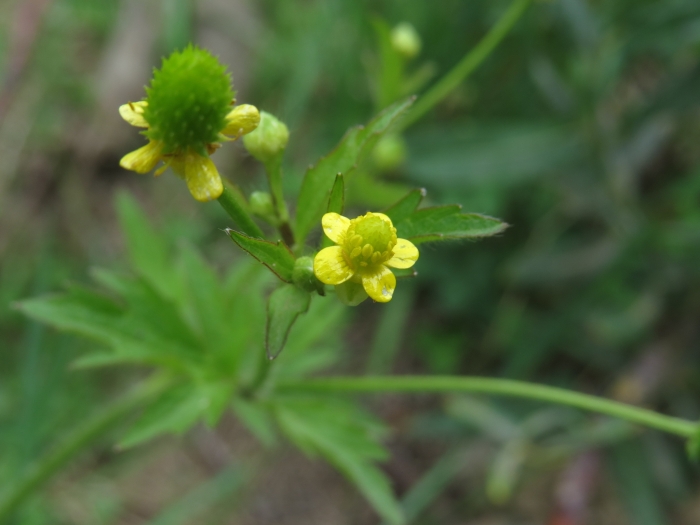Bristly Buttercup
(Ranunculus pensylvanicus)
Bristly Buttercup (Ranunculus pensylvanicus)
/
/

© Jack Bindernagel
CC BY 4.0
Image By:
© Jack Bindernagel
Recorded By:
Copyright:
CC BY 4.0
Copyright Notice:
Photo by: © Jack Bindernagel | License Type: CC BY 4.0 | License URL: http://creativecommons.org/licenses/by/4.0/ | Uploader: jbindernagel | Publisher: iNaturalist |

























Estimated Native Range
Summary
Ranunculus pensylvanicus, commonly known as Bristly Buttercup or Pennsylvania Buttercup, is a perennial herb native to wet meadows, marshes, and stream banks in North America, particularly in the northern United States and Canada. It typically grows to a height of 1-3 feet (30-90 cm) and spreads about 1 foot (30 cm). The plant features distinctive bristly stems and leaves, which give it its common name. It produces bright yellow flowers from late spring to midsummer, which are about 1 inch (2.5 cm) in diameter and have a modest ornamental appeal due to their cheerful color.
Bristly Buttercup is valued for its ability to thrive in wet conditions and is often used in native plant gardens, rain gardens, and restoration projects. It prefers consistently moist to wet soils and full sun to part shade. While it is not commonly used in formal garden settings, its adaptability to wet areas makes it a useful plant for challenging sites. It is not known for any significant problems with diseases or pests, but it can spread aggressively in ideal conditions, potentially becoming weedy. Gardeners should be cautious when planting it near less robust plants, as it may outcompete them.CC BY-SA 4.0
Bristly Buttercup is valued for its ability to thrive in wet conditions and is often used in native plant gardens, rain gardens, and restoration projects. It prefers consistently moist to wet soils and full sun to part shade. While it is not commonly used in formal garden settings, its adaptability to wet areas makes it a useful plant for challenging sites. It is not known for any significant problems with diseases or pests, but it can spread aggressively in ideal conditions, potentially becoming weedy. Gardeners should be cautious when planting it near less robust plants, as it may outcompete them.CC BY-SA 4.0
Plant Description
- Plant Type: Herb
- Height: 1-3 feet
- Width: 0.5-1 feet
- Growth Rate: Rapid
- Flower Color: Yellow
- Flowering Season: Summer
- Leaf Retention: Deciduous
Growth Requirements
- Sun: Part Shade, Full Shade
- Water: High
- Drainage: Medium, Slow
Common Uses
Bee Garden, Border Plant, Water Garden
Natural Habitat
Wet meadows, marshes, and stream banks in North America
Other Names
Common Names: Pennsylvania Buttercup, Bristly Crowfoot
Scientific Names: , Ranunculus pensylvanicus, Ranunculus canadensis, Ranunculus hispidus, Ranunculus pensylvanicus subsp. riparius, Ranunculus riparius, Ranunculus trifolius,
GBIF Accepted Name: